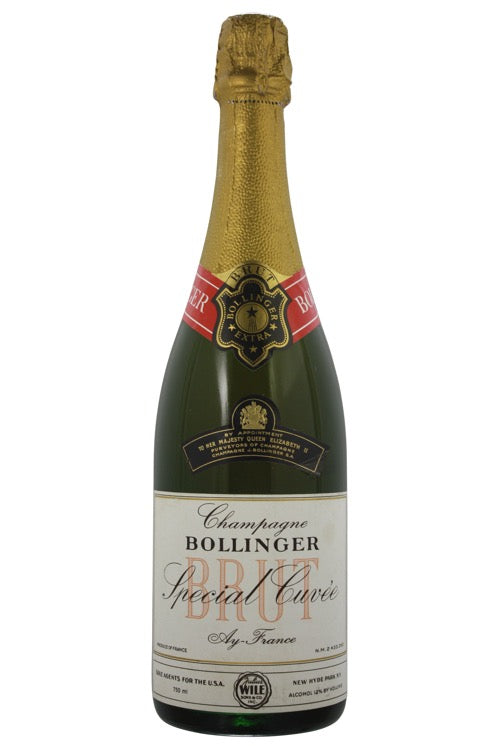1
/
of
2
Bollinger Special Cuvee Brut - NV (750ml)
Bollinger Special Cuvee Brut - NV (750ml)
Regular price
$84.99
Sale price
$84.99
Regular price
$99.99
Unit price
/
per
The name of Bollinger’s emblematic champagne, with its English spelling, encapsulates its entire history. It was the British agent of Georges Bollinger who, in 1911, christened it “Special Cuvée”, as he found the expression “non-vintage brut” did not befit a champagne of such subtlety. Over a century later, the name of the champagne emblematic of Bollinger’s expertise still encapsulates its entire history.
The delicate assembly of the expression of a harvest and a majority of reserve wines, some of them held in magnums for between 7 and 15 years
Special Cuvée is composed of over 85% Grand and Premier crus of the three main Champagne varieties: 60% Pinot Noir, 25% Chardonnay and 15% Meunier. It is cellar aged for twice as long as required by appellation regulations. It is moderately dosed at between 7 and 8 grams per litre.
Share :


- varietal
- Region
- Sub - Region
- Type
- Reviews
Champagne is more often than not a composition of three main grapes; Chardonnay, Pinot Noir and Pinot Meunier. In Champagne, France, they are usually sourced from different villages and vintages to give winemakers some insurance in what is a relatively marginal climate but which also to add complexity into the wines. Chardonnay typically contributes stone fruit (white peach), apples and citrus fruit to the blend while Pinot Noir and Meunier can add body and more red fruit such as redcurrants and sour cherries.
Champagne was the first region in the world to start producing sparkling wine on a commercial level and where most New World producers look to for inspiration. Producing a fizzy wine often occurred by accident, and was, for a long time seen as a detriment with producers going to great lengths to prevent a second fermentation. Due to the marginal climate the temperature in the fall would often dip, sedating the yeasts before all the sugars were converted into alcohol. When the region warmed up the following spring the unfermented sugars occasionally spurred on a second fermentation trapping the carbon dioxide (a by-product) in the bottle . It wasn’t until the turn of the 19th century that sparkling wine became popular and desirable. The region is split into four regions. Three are adjoining: The Montagne de Rheims to the north, the Cotes de Blanc to the south, and the Marne Valley in between. The fourth and separate region is the Cote des Bar in the Aube valley, some 70 miles south of Epernay.
NULL
White wine is a wine whose color can be pale-yellow, yellow-green, and yellow-gold colored. The wine is produced from a variety of grape varieties. The flavor and color comes from the juice of the grape and sometimes the skin of the grape as well. Interestingly, not all white wine comes from white grapes. Some select red grapes are used as in Champagne.



